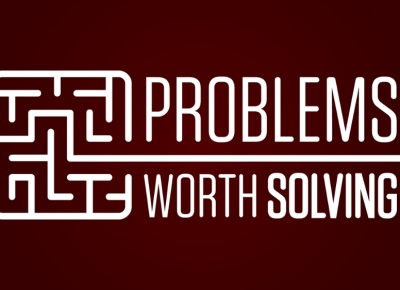The Need for a New Grading System
Imagining higher education without grades of any kind may sound like an exercise in fantasy, but, in fact, grades did not always exist. The roots of the university date back to 6th-century Europe, when monastic and cathedral-based schools first appeared. In the high medieval period, some of them assumed university status, the first of which was the University of Bologna, founded in 1088. As far as we know, neither these new institutions nor the schools that spawned them graded their students’ performance.

European Credit Transfer Systems (ECTS)
Something like grades was instituted just three centuries ago when European universities started fostering competitions among students for prizes and rank order. No competition was fiercer than the Cambridge Mathematical Tripos examination, begun in the early 1700s and increasingly formalized during the 18th century. It took the form of a tournament in which correct answers to questions moved students up the rungs and the ranking system. As they rose, students faced more challenging questions and more able opponents. The Tripos went on for days and offered compelling rewards. The top competitors received “titles” that they carried with them through adulthood and substantial amounts of money. The most successful student shared in a portion of the institution’s endowment for life. Conversely, the poorest competitors suffered long-term dishonor (Schneider & Hutt, 2013).
Criterial for Evaluating Grading Systems
In so many ways our current grading system leaves much to be desired. But we have not yet formalized how to appraise a grading system or what we want to see in one. What would a better system offer that we are not getting now? Of course, it should be feasible and fairly easy to implement. Let’s not even try to overturn institutional standard operating procedures such as giving final letter grades. Although some of us may be uncomfortable with the A-F scale, only institutions can change it – not faculty. Besides, final letter grades do not present the problems that our current way of judging student work does.
We can identify some criteria for evaluating grading systems by sorting through the adverse unintended consequences of our current practices:
1. Uphold high academic standards. We have seen that our current system incentivizes faculty to sacrifice rigor in order to enhance student satisfaction and avoid administrative censure for giving too many low grades. In turn, students fail to master much content, refine their skills, maximize their cognitive development, and adopt lifelong learning skills. Their employers also suffer by having to hire and manage graduates who are ill-prepared in communication, collaboration, analytical thinking, and problem solving.
A better system would establish and maintain high standards for student work, restoring integrity to grades and reflecting discriminating professional judgment. (Also see criterion 4. “Motivate students to excel.”) At the same time, it would not lower an instructor’s student ratings.
2. Reflect student learning outcomes. Unfortunately, grades as we know them today do not reflect the learning outcomes that the students have and have not achieved. After all, either a student achieves a given outcome or he doesn’t. In this context, what does a D, C, or B mean? Has a student achieved some of the outcomes? If so, which ones? Has he actually achieved any of them? Or does he merely fail at a higher level than he did at the beginning of the course? No wonder employers and accrediting agencies put little stock in grades. As a result, students really do not know what they are capable of and probably assume they have mastered the outcomes well enough. Besides, the word outcome sounds like something that has already happened.
In a better grading system, grades would be tied to results – specifically, what outcomes of the course students have and have not achieved – and the relationship between grades and outcomes achievement could be easily explained in a syllabus. This means the course grades could be related to program outcomes.
3. Motivate students to learn. As elaborated earlier, our current system has turned higher education into a game that students win when they obtain the most coveted rewards – that is, high grades – for putting in the least amount of time and effort. Desirable grades are not only the coin of the realm but also, students believe, a key to a better occupational and economic future. Performance, then, is everything; learning does not even figure into the game.
Ideally, a grading system would emphasize learning over grades and encourage a learning over a performance orientation (Dweck & Leggett, 1988). Students would want to learn, and, given well-designed assessment instruments, grades would closely mirror learning.
4. Motivate students to excel. As we have seen, allocating partial credit for less than satisfactory work discourages students from aspiring to achieve excellence. In fact, it lowers the marginal utility of moving beyond a minimal investment of time and effort. It lets students slip by in their course work and thereby win the higher education game.
A better grading system would build in incentives for students to aim high, work hard, and do their best. It would demand strong performances to earn any points and would make inferior work unacceptable.
5. Discourage cheating. In the current grading system, cheating and plagiarism are popular strategies that some students use to help them win the higher education game. With little incentive to learn or do high-quality work, why shouldn’t they cheat and plagiarize? In fact, some students put considerable time, effort, and even money into implementing these strategies and eluding detection. They may regard this as part of the game.
An improvised [improvbed?] system would make cheating either more difficult, less appealing, or both. It would rely more on authentic assessments, focus on developing higher-order cognitive skills and creativity, do a better job of motivating students to learn and excel, or furnish them with more choices and control over their learning and assessment.
6. Reduce student stress. Apparently, our system is hazardous to our students’ mental health. In the game of higher education, students stress over a low grade because it may affect their precarious future job prospects and financial well-being. Their anxiety increases when they fail to understand instructors’ expectations of their work and feel they lack control over their academic success.
Even the most ideal grading system would not eliminate student stress, but a better system would give students a stronger sense of control over their educational lives, a clearer picture of faculty expectations, more choice and volition, and a more accurate handle on what they can and cannot do at satisfactory levels. It would also minimize grade-related conflicts with their instructors.
7. Make students feel responsible for their grades. With our current grading system, some students blame their lower than expected grades on an external locus of control, such as the fates or their instructors. They may not understand faculty expectations, or they may bank on eking a few more points out of weary instructors.
It would be better to grade within a system that would give students clear choices about how much and how deeply to master the course material and tie their choices to their grades. As long as they know what they have to do for each grade, students would realize that the responsibility for earning that grade rests squarely on them. No doubt an unfavorable grade would not damage an instructor’s student ratings to the extent that it does now.
8. Minimize conflict between faculty and students. The higher education game that our current grading system fosters is a high-stakes one. Students’ stress over grades gives rise to grade-grubbing, which translates into their frequently protesting their grades and pressuring faculty to give them more points, even when not justified. This ritualized conflict harms the rapport and trust between students and faculty and robs them both of productive time.
In a better grading system, students would understand the work required for each assignment and test as well as their central role in determining their grades. Therefore, they would stop confronting their instructors with grade protests and hopefully evaluate their faculty more gently.
Another unpleasant interaction that students have with faculty is negotiating an extension on an assignment. After all, everything is negotiable, right? An improved system would incorporate positive incentives for students to plan ahead and submit work on time or even early. At the same time, it would build in automatic costs for students who choose to take an extension, and it would be clearly their choice to do so, not the instructor’s discretion.
9. Save faculty time. Unless an instructor relies on objective items from a test bank, grading takes an enormous amount of time these days, even for faculty using rubrics. Furthermore, it is time unpleasantly spent. Grading is arduous: reading difficult-to-understand prose, passing judgments, working through disappointments, parceling out partial credit, and justifying these decisions in writing to suspicious students. And grading offers no happy ending. Faculty know that the results will ultimately drive a wedge between them and at least some of their students, and that they will have to spend more time adjudicating grade complaints.
There is a better way, one that would free instructors from endless, mind-numbing hours of writing justifications and explanations on their students’ work. It would not give partial credit, nor would it have graduated levels of performance. Rather, it would rely on simple, one-level rubrics anchored in demonstrating achievement of outcomes.
10. Give students feedback they will use. Currently, students seem to view faculty feedback on their work primarily as justification for the grade and not so much as constructive advice on how to improve next time.
In a better system, faculty would not have to justify taking off points and splitting hairs of quality. Students might then regard the feedback they receive from their instructors as intended to be constructive and useful.
These 10 criteria for evaluating a grading system grew out of our current system’s flaws, but additional standards apply as well:
11. Make expectations clear. Today’s grading system does not obscure faculty standards and expectations, but it does not induce instructors to write particularly detailed directions either. Consequently, students often complain that faculty do not supply enough information on what they are looking for in an assignment or test and how they will assess it. Although rubrics describe the various performance levels of student-constructed work, the descriptions are usually quite brief—short enough to fit a tabular cell—and minor homework assignments may or may not have instructions and a rubric.
In an ideal grading system, the faculty’s most time-consuming and detail-oriented task would be writing or scripting their expectations, standards, and directions for assignments and tests so as to communicate them clearly to their students. This may mean checking students’ comprehension by having them paraphrase back those expectations or grade a work sample against them. In any case, students would understand what they need to do to get any given grade in each assignment and the course overall. As we have seen, many of the characteristics in an ideal grading system rest on this clarity.
12. Foster higher-order cognitive development and creativity. Again, nothing in our current system directly inhibits faculty from teaching and assessing higher-order cognitive skills, such as applying, analyzing, evaluating, and creating. But the system does discourage them because it makes grading so time-consuming. Whereas objective test items can be written to assess higher-order thinking (Suski, 2004), test-bank items are rarely designed to do so, which passes on to faculty the task of composing such items. Otherwise, faculty must give assignments that require students to “construct” something on their own – an essay, a paper, a visual representation, a portfolio, a written or oral translation, a computer program, an engineering or graphics design, a multimedia project, or a piece of art – that would require and demonstrate higher-order thinking to be considered a worthy product.
Obviously, a better system would allow faculty to grade student-constructed work more easily and quickly. Relying on a one-level rubric would probably accomplish this.
13. Assess authentically. Students preparing for or already pursuing a career rightfully expect to learn skills and do assignments that are “authentic” – that is, “real world” and “career related,” which are qualities that typical multiple-choice tests lack. Adult and advanced students in particular demand authenticity. Many of these students are taking online courses, where proctored exams are impossible and only student-constructed work is appropriate.
But grading authentic assessments in our current system presents the same problems for faculty – considerable time and effort – as does grading assessments of higher-order cognitive skills. An ideal grading system would streamline this assessment process for faculty.
14. Have high interrater agreement. In general, the greater the number of rating gradations, the finer they are, and the more room there is for disagreement among raters. This is especially true when the expectations for the work are not completely clear or sufficiently detailed, which is sometimes a problem in today’s grading system. Standardized testing companies go to great lengths to ensure interrater consistency by training their raters of essays to use a rubric in a uniform way.
A better grading system would allow fewer options and less room for disagreement. It might have as few as two rating options, satisfactory or unsatisfactory, and would emphasize explicating clear criteria for a satisfactory performance. That is, the assessment standards would be clear enough that disciplinary colleagues would typically agree on their rating of given student products.
15. Be simple. A grading system like the one we most commonly use now has too many rating levels for too many individual assignments and tests based on too elaborate a point structure to be considered simple. No wonder students ask so many questions about how they will be graded in a course and so often forget the details. Even instructors get confused.
Streamlining the grading procedures as criterion 14 suggests would improve the system for all parties involved. By “chunking” aspects of a course, both instructors and students would find it easier to recall the criteria for final grades. For instance, we might group assignments into bundles or modules around learning outcomes and course grades. We could also simplify the point system and faculty decision making by eliminating partial credit and using a one-level rubric.
Reference
https://tomprof.stanford.edu/posting/1443
https://www.quora.com/How-are-Swiss-university-grades-scaled









